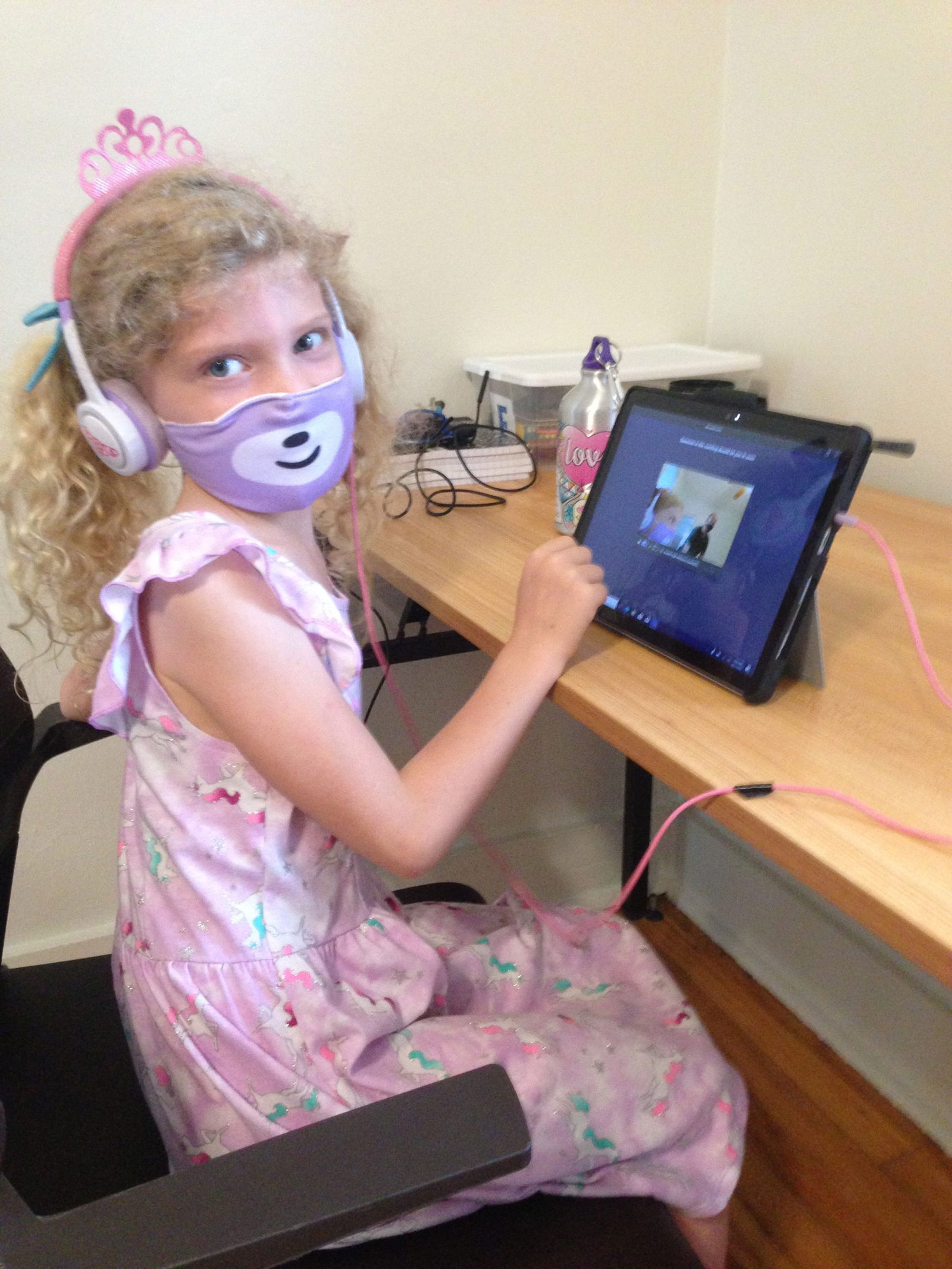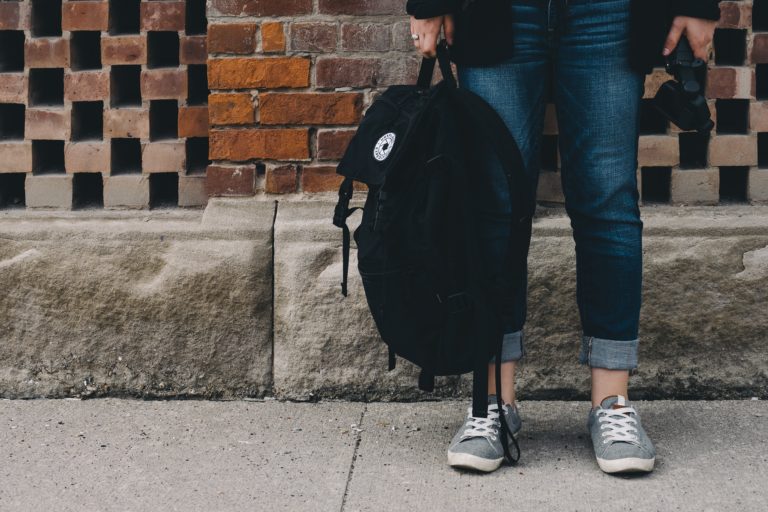Our 2020 One-Room Schoolhouse
Little did I know back in college when I embarked on a massive research project on one-room schoolhouses (thanks, liberal arts education) that my own child would attend one in the year 2020.
Kind of.

There are screens instead of slates and insulated bags instead of lunch pails, yet many of the qualities of the traditional one-room schoolhouse–like miniscule class sizes and multiage groups–are alive and well this school year.
My seven year-old daughter is a second grader in the Shelby County School District. Like many parents, we agonized over whether to send her back to school in-person or to keep her home for virtual learning. In discussing these two choices with some neighborhood parents, a new option emerged: a pod school.
Pod schools, or learning pods, consist of small groups of students learning together in-person in a location other than a traditional school, such as a home. Some pod schools have licensed teachers or tutors, while others are facilitated by parents.
The benefits of pod schools include providing social interaction for kids while allowing for additional virus safety. However, they have been viewed as controversial for their potentially inequitable nature.
While the decision to do virtual learning was ultimately made for us, we are so glad that we are able to do pod school with a small group of neighborhood kids. Our pod consists of seven students (six families) in grades 1-3. We are following our school’s virtual curriculum, and parents take turns supervising (not teaching).
What makes our group unique–and extremely fortunate–is that one of our families owns a rental house that just happened to be available during the school year. So our kids are literally attending a schoolhouse (albeit a six-room one).
We are also very fortunate to have such a great mix of parental support consisting of both stay-at-home parents and working parents, many of whom are working from home with very flexible schedules.
Now that we are several weeks in to the school year, I think we have settled into a comfortable routine. Every morning, we walk or bike to the schoolhouse around the corner. Our daughter has her temperature checked before washing her hands and signing into Microsoft Teams, the platform Shelby County Schools is using for instruction. Each grade of students has its own room, and each student has her or his own workspace. Masks are worn while inside.

Each family is responsible for supervising the students one day during the week, with an additional parent arriving during the lunch/recess block (which occurs in the backyard) for extra support. Aftercare is available three days a week for families who need childcare beyond the end of the school day, but most of the kids stay whether they need to or not because it’s such a fun time.
While we wish our children could attend school in-person safely again, being a part of this pod school has made a huge difference in our attitude toward virtual learning. This less-than-ideal form of education can be frustrating to say the least, technology being the primary culprit. Another major challenge is figuring out our role as parents. I am not the teacher, yet my kid is too young to be fully autonomous.
A lot of these frustrations I’ve heard articulated by other parents has been eliminated–or at least mitigated–by being part of a pod school and sharing the burden of school supervision with the bonus of getting to have some semblance of social interaction.
On a practical level, we have been able to handle most technology hiccups relatively painlessly because either it affects everyone (ie, the Internet goes out), or students can share with a classmate if it’s an individual device issue.
For instance, one day, my daughter’s headphones weren’t working. If she had been at home with me, we would have been scrambling to fix her headphones and/or tablet, and she would have missed out on instructional time (not to mention our stress levels would have been high). However, since she was at the schoolhouse, she was able to jump on with her fellow second grader while another parent, who happens to work in IT, troubleshot the issue.
Speaking of having another parent help, that has also been key to our group’s success. I may be a trained educator, but I know that I am not the best teacher for my daughter (and yes, I do harbor some “homeschool guilt” about that). We have a great relationship, but she responds–in an educational setting–so much better to someone who is not me. It’s the same as the way kids are on their best behavior for everyone but Mom.
But the best thing about our pod school is the socialization our children get to have again.
My husband and I have been really lucky that our children have adapted so well to this time of quarantine and social distancing. They play great together as siblings, but I know they’ve missed their friends. I didn’t realize how much until witnessing the unbridled joy of a pack of kids running around a backyard.
Yet for all the benefits of our pod school, it hasn’t come without its challenges and fair share of hard work. The parents began meeting weekly in August via Microsoft Teams (which was good practice for me!) to go over all kinds of details ranging from virus safety to house layout to financial obligations.
Frankly, the logistics have been overwhelming. This group is very thorough, which is a good thing. But that also means that we have binders full of schedules, checklists, sign-in sheets, and permits. Because yes, we got permission from the city–and support from the neighbors–for our schoolhouse.
We are also accountable to each other, taking all necessary virus precautions at the house, such as temperature checks, surface cleaning, and masks. When contemplating potentially risky activities like travel and extracurricular activities, it is necessary that we consider the health and safety of our group. We are literally all in this together.
And then there are all the little things like furnishing the house and keeping it operating as sustainably as possible. I’m quite proud of the way we have pooled our resources together to cut down on both cost and waste, even if that means I’m guaranteed to run a load of hand towel laundry on my assigned supervisory day.
Sure, it would be easier to just hunker down in our own home and do virtual school in our pajamas (even though that is technically against school rules). But there is much beauty in being a part of a community again and sharing the process of learning with others.
So maybe our schoolhouse isn’t in the middle of a windswept prairie, and maybe we don’t have to walk uphill both ways, barefoot, in the snow to get there, but that doesn’t make this experience any less historic. It will certainly be something our daughter will be telling her grandchildren about someday.








